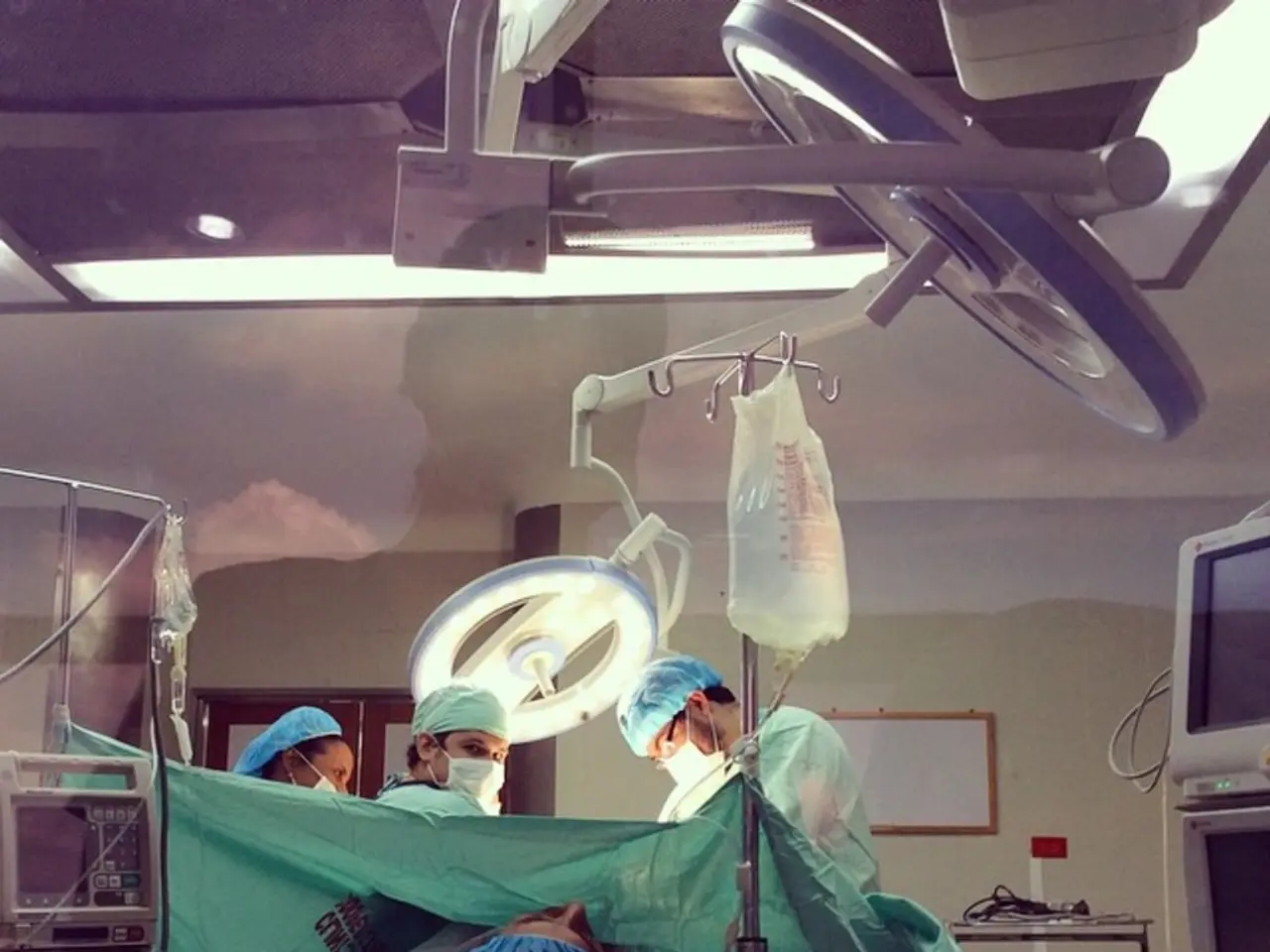Rapid Expansion of NHS Robotics Program, Set to Help Millions of Patients
The National Health Service (NHS) in England is set to witness a significant increase in the use of robotics for emergency operations, as part of a broader strategy to improve patient care and reduce waiting lists.
According to NHS England, robotic surgery is expected to become the default for many operations in the next decade, with up to 90% of minimally invasive surgeries potentially being robot-assisted by 2035. This shift towards advanced surgical techniques is outlined in the NHS's 10-year plan, with Secretary of State for Health and Social Care, Wes Streeting, highlighting the potential benefits.
Sir Jim Mackey, the NHS chief executive, has stated that expanding the use of new technology like robotic surgery will play a crucial role in returning to shorter elective waiting times by 2029. The expansion of robotic surgery is expected to lead to better outcomes, a faster recovery, and shorter hospital stays for patients.
NHS England is planning to roll out robotics across its services in England over the next decade. The use of robotic surgery is already increasing, with over 80,500 elective robotic-assisted procedures reported in 2024, marking a 43% increase from 2023. Hospitals like Whipps Cross are actively expanding their robotic surgery programs, with a focus on training more surgeons and enhancing surgical training opportunities.
The use of robotics is being explored in various specialties, such as orthopedics and urology, where it can significantly improve surgical precision and patient outcomes. Five systems for soft tissue procedures, including hernia repair, removal of tumors, and gallbladder removal, have received conditional approval from the National Institute for Health and Care Excellence (NICE). Six systems for orthopaedic surgery, such as full and partial knee replacement procedures and hip replacements, have also received conditional approval from NICE.
However, the rollout timeline will depend on addressing the logistical and financial challenges associated with implementing this technology on a large scale. There are concerns about the feasibility and cost-effectiveness of a rapid rollout, as well as potential issues of penalizing hospitals that do not adopt this technology due to practical challenges.
Despite these challenges, the benefits of robotic surgery are clear. Patients undergoing surgery involving robots can recover quicker and be discharged sooner. For example, some bladder cancer patients leaving hospital in just five days is possible with robotic surgery, half the expected time with traditional open surgery.
In conclusion, the expansion of robotic surgery in NHS England is a significant step towards improving patient care and reducing waiting lists. While there are challenges to overcome, the potential benefits make it an exciting development for the future of surgery in the NHS.
Science and technology are playing pivotal roles in the NHS England's ongoing efforts to enhance surgery precision and patient outcomes, with many medical-conditions potentially benefiting from robot-assisted health-and-wellness procedures. The increasing use of robotic surgery is projected to lead to better outcomes, faster recovery, and shorter hospital stays for patients.




